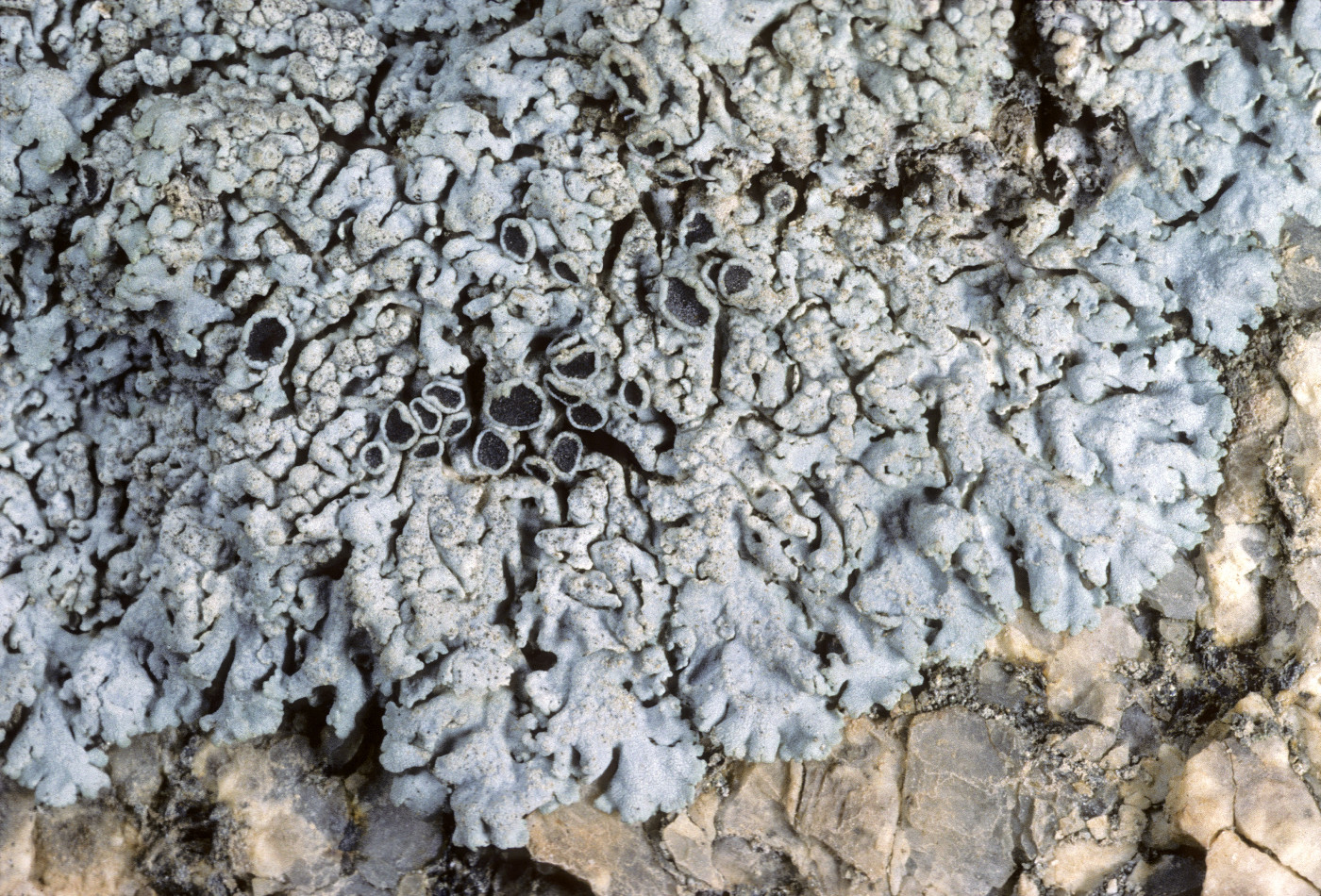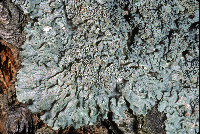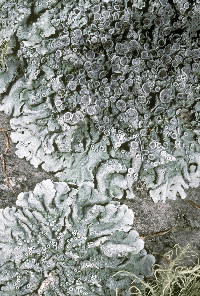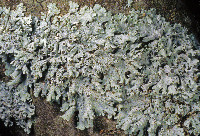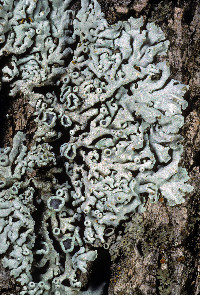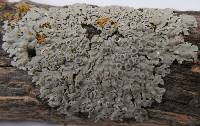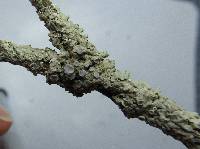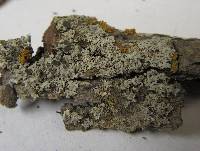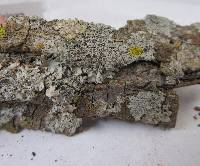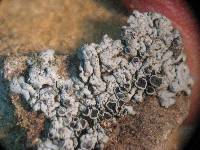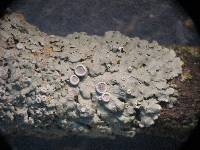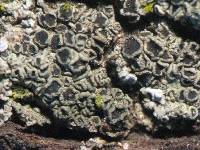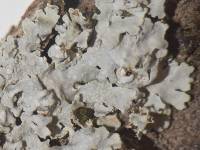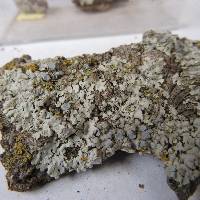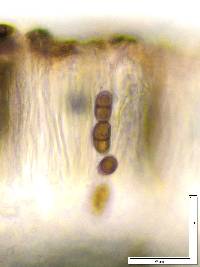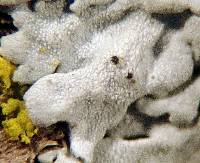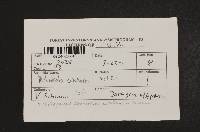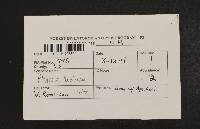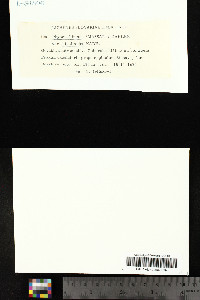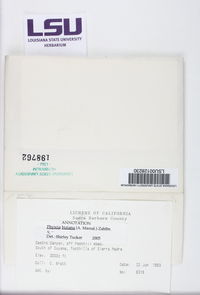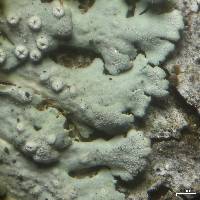
Consortium of Lichen Herbaria
- building a Global Consortium of Bryophytes and Lichens as keystones of cryptobiotic communities -
- Home
- Search
- Images
- Species Checklists
- US States: O-Z >
- US National Parks
- Central America
- South America
- US National Parks
- Southern Subpolar Region
|
|
|
|
Family: Physciaceae
[Dimelaena biziana (A. Massal.) Trevis., morePhyscia ragusana var. biziana (A. Massal.) Zahlbr., Squamaria biziana A. Massal.] |
Nash, T.H., Ryan, B.D., Gries, C., Bungartz, F., (eds.) 2002. Lichen Flora of the Greater Sonoran Desert Region. Vol 1. Thallus: orbicular to irregular, up to 3 cm diam. with ± imbricate lobes lobes: up to 3 mm wide but usually narrower, distinctly widening and slightly ascending at tips, eciliate upper surface: brownish gray to gray or cream-colored, usually with a dense pruina (crystals); soredia and isidia absent upper cortex: paraplectenchymatous medulla: white lower cortex: prosoplectenchymatous, lowermost part sometimes with rounded cells, ± paraplechtenchymatous lower surface: white to brownish, with white to dark gray, scattered rhizines Apothecia: numerous, up to 2.5 mm across, usually smaller; margin: often with crenulate margin when young; disc: brown to black, mostly covered with a white pruina ascospores: brown, 1-septate, of either Physcia-, Pachysporaria-type or intermediate, (13-) 15-18.5 (-20.5) x 6.5-8.5 (-11) µm Pycnidia: numerous, immersed; conidia: subcylindrical to cylindrical, 4-6 x 1 µm Spot tests: upper cortex K+ yellow, C-, KC-, P+ yellow; medulla K- (sometimes faintly + yellowish), C-, KC-, P- Secondary metabolite: upper cortex with atranorin. Substrate and ecology: growing on tree trunks or branches in open situations and on exposed rocks World distribution: known from Africa, North and South America and Europe Sonoran distribution: one of the most common Physcias on bark in the Sonoran region, particularly in montane areas of Arizona, southern California, Baja California, Baja California Sur, Chihuahua, Sonora and Sinaloa. Notes: Physcia biziana is easily recognized by the dense pruina and the K negative medulla. However, fairly often the pruina is sparse and in such cases the rounded lobes with a brownish tinge may be of help in separating the species from P. stellaris. The spores from this material are somewhat smaller than reported for South America, but this might be explained by a general tendency for Physcia species to have bigger spores in more subtropical areas compared to temperate regions. P. biziana is evidently the fertile counterpart of P. dimidiata. |
|
|
|
Powered by Symbiota

